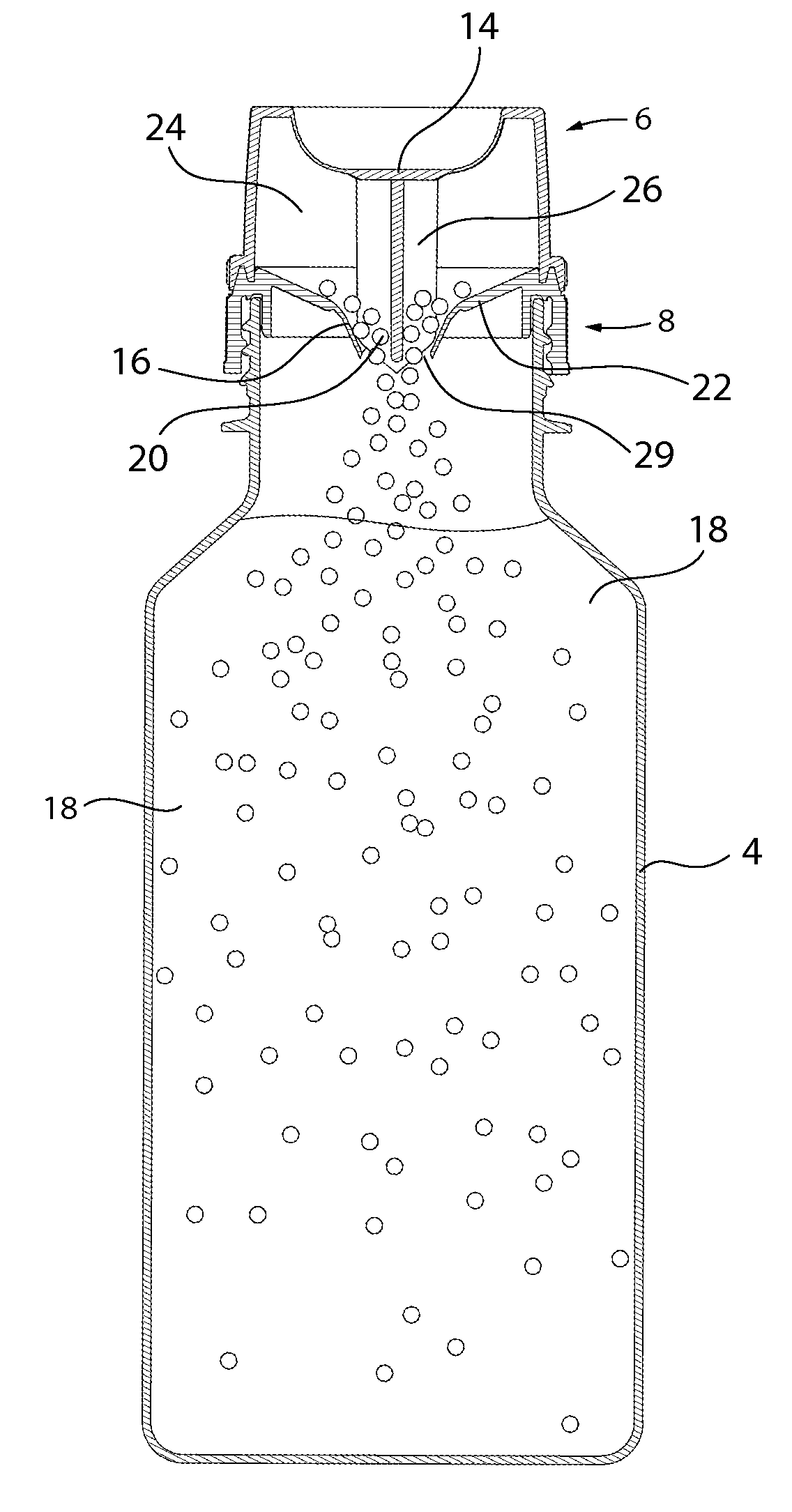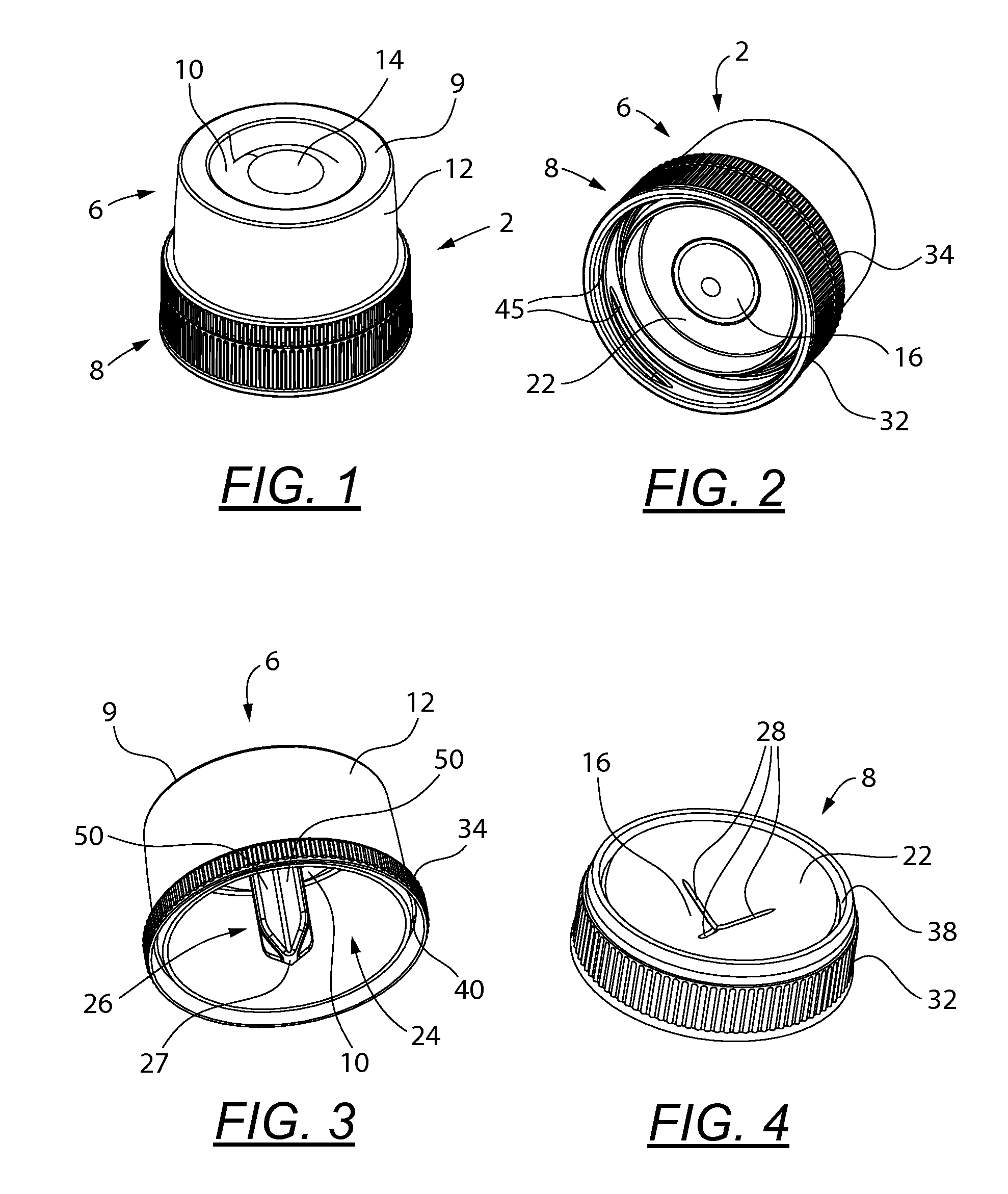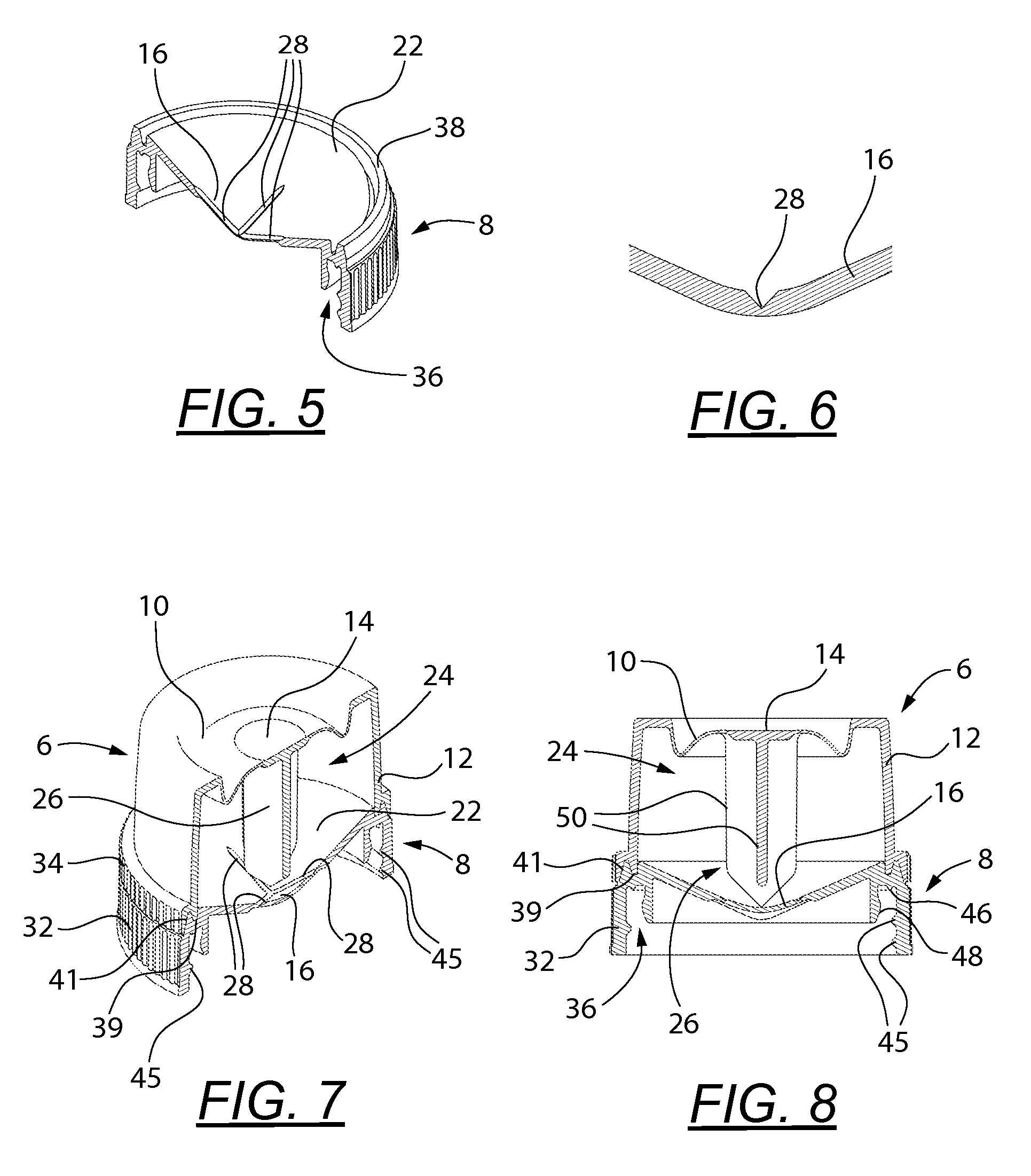Dispensing capsule
a technology of capsules and capsules, applied in the field of capsules, can solve the problems of time-consuming and often messy process, product stability, strength and effectiveness not retained, etc., and achieve the effects of convenient identification, faster rate and higher reliability
- Summary
- Abstract
- Description
- Claims
- Application Information
AI Technical Summary
Benefits of technology
Problems solved by technology
Method used
Image
Examples
Embodiment Construction
[0174]The use of conventional liquid containers such as plastic bottles for carrying water, juices, and other desirable liquids for human consumption is quite well known. The present device is generally directed, although not so limited, to a dispensing capsule that may be used with such bottles or containers to separately store an ingredient to be mixed with a liquid at the time of consumption to form a consumable solution or suspension. The dispensing capsule may also be used with other types of receiving containers where separate storage of one ingredient for mixing with a liquid at the time of use is desirable. In describing the preferred and alternate embodiments of the present device, as illustrated in the Figures, specific terminology is employed for the sake of clarity. The invention, however, is not intended to be limited to the specific terminology so selected, and it is to be understood that each specific element includes all technical equivalents that operate in a simila...
PUM
 Login to View More
Login to View More Abstract
Description
Claims
Application Information
 Login to View More
Login to View More - R&D
- Intellectual Property
- Life Sciences
- Materials
- Tech Scout
- Unparalleled Data Quality
- Higher Quality Content
- 60% Fewer Hallucinations
Browse by: Latest US Patents, China's latest patents, Technical Efficacy Thesaurus, Application Domain, Technology Topic, Popular Technical Reports.
© 2025 PatSnap. All rights reserved.Legal|Privacy policy|Modern Slavery Act Transparency Statement|Sitemap|About US| Contact US: help@patsnap.com



